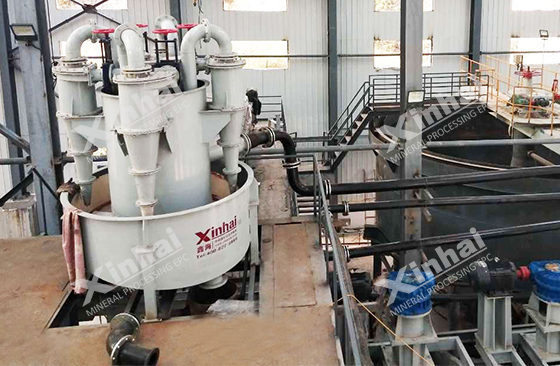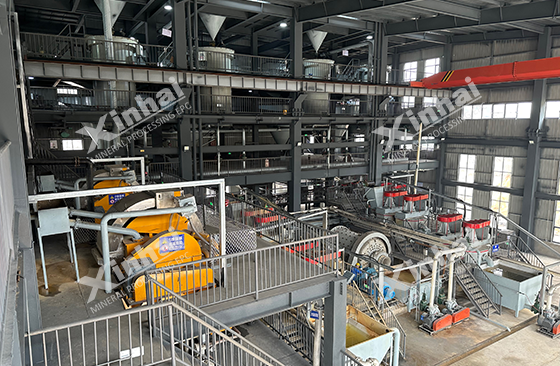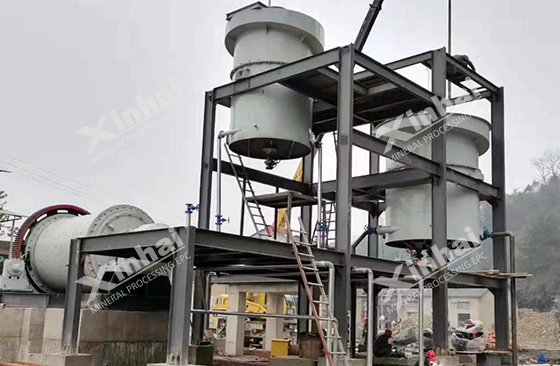Quartz sand is widely distributed in nature, and its products are mainly used in glass products, casting, refractory materials and other industrial sectors. With the continuous development of science and technology, its application scope is gradually expanding. Due to its stable chemical properties and high hardness, quartz products are widely used in electronic materials, thin film materials, atomic energy, semiconductor silicon, optical fiber communication cable materials and some cutting-edge national defense science and technology equipment, so the demand for high-quality quartz is also increasing. Therefore, strengthening the research on the purification and deep processing technology of quartz sand and the demand for high-purity quartz has very important economic and practical significance.

Use the table of contents below to navigate through the guide:
01Ore dressing and purification technology for high-purity quartz sand
The target mineral for quartz ore dressing and purification is silicon dioxide. All other minerals are impurities. Quartz ore is often accompanied by impurity minerals such as feldspar, mica, clay, and iron. Therefore, the process principle of quartz purification should try to increase the content of silicon dioxide in the product and reduce the content of these impurity minerals. Quartz is used in different industries with specific quality requirements, so the content of silicon dioxide and impurities in the products is also different. The purification process of quartz sand should meet the needs of different industries as much as possible.
The purification process of quartz sand is mainly divided into two categories: physical and chemical purification and biological purification. Commonly used quartz purification processes include crushing, screening, scrubbing, gravity separation, flotation, magnetic separation, electrostatic separation and acid leaching. The fluid inclusions in quartz sand have a greater impact on the upstream products of quartz sand. In addition to considering the effective removal of harmful minerals such as iron-containing minerals and aluminum-containing minerals during purification, the removal of these fluid inclusions should also be considered.

02Washing and classifying process of quartz sand
Since there are different degrees of ore slime in quartz sand, it is necessary to wash and grade the quartz sand during the beneficiation process to make the final product meet the corresponding standards. When there are more impurities in the quartz sand and they are contained in finer ore slime, the washing and classifying process can be used to remove the ore slime, and at the same time, the content of impurities such as iron and aluminum in the ore can be reduced. At present, in actual production, silica sand beneficiation plants use drum screens, spiral washers, spiral classifiers, hydraulic classifiers and hydrocyclones to deslim quartz sand.

03Quartz sand scrubbing process
The purpose of scrubbing is to remove the oxidized film iron on the surface of quartz sand and the muddy impurity minerals adhering to the surface of quartz sand. During scrubbing, the purpose of removing impurities is achieved by using external mechanical force and the collision and friction between the internal particles of quartz sand. In addition, scrubbing can also break up the mineral aggregates, further dissociate the minerals, and then achieve further purification through classification operations. There are two common scrubbing methods: rod scrubbing and mechanical scrubbing. When scrubbing, it is necessary to control the scrubbing concentration and time to avoid additional equipment energy consumption and mineral processing costs.

04Quartz sand separation process
Gravity separation: A method of removing impurity minerals by utilizing the density difference between impurity minerals and target mineral quartz, and the different movement directions of the two in water or other media. Commonly used equipment for gravity separation and impurity removal include spiral concentrators, spiral chutes and shaking tables.
Magnetic separation: Quartz in quartz sand is a non-magnetic mineral, while impurity minerals such as feldspar, limonite, hematite, ilmenite, biotite, rutile, tourmaline and garnet are weakly magnetic minerals except feldspar, and magnetite is a strong magnetic mineral. Magnetic separation can utilize this difference in magnetism in quartz sand to remove weakly magnetic iron impurity minerals and strongly magnetic iron minerals to achieve the purpose of purification and impurity reduction.
Flotation: When impurities in quartz sand are mostly contained in the ore mud, only washing, scrubbing, graded desludging and magnetic separation cannot achieve the ideal product index. Therefore, in order to further improve the purity of quartz, flotation is often used. Flotation is mainly to remove the iron-containing impurity minerals in the form of impregnation or lens in the quartz particles and the removal of non-magnetic associated minerals such as feldspar, mica, and kaolin.

The above content is a simple introduction to the quartz sand purification technology. For the purification of high-purity quartz sand, using only one purification technology often cannot achieve the ideal index, especially for those quartz sands used in high-tech enterprises. Therefore, the purification of high-purity quartz sand often adopts a process combined with centralized purification technology to achieve excellent indicators.


 marketing@ytxinhai.com
marketing@ytxinhai.com  0086 13810327080
0086 13810327080 






































































































 CHAT
CHAT MESSAGE
MESSAGE





